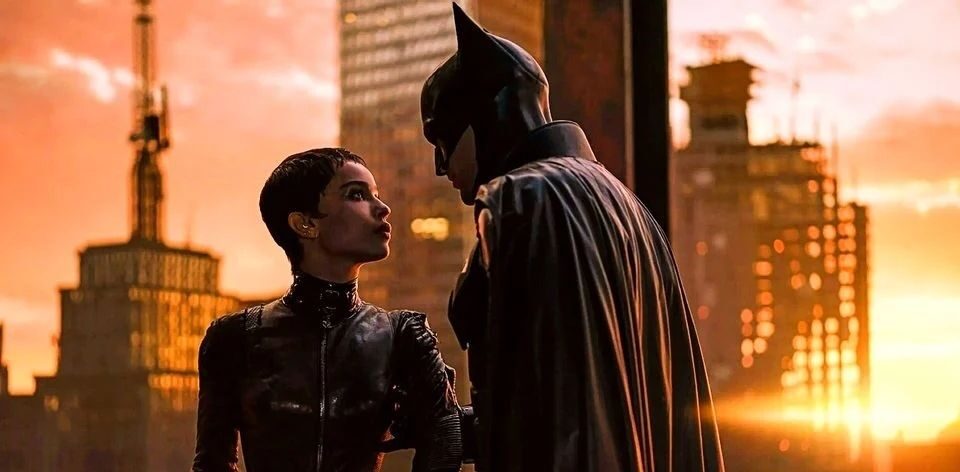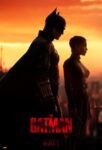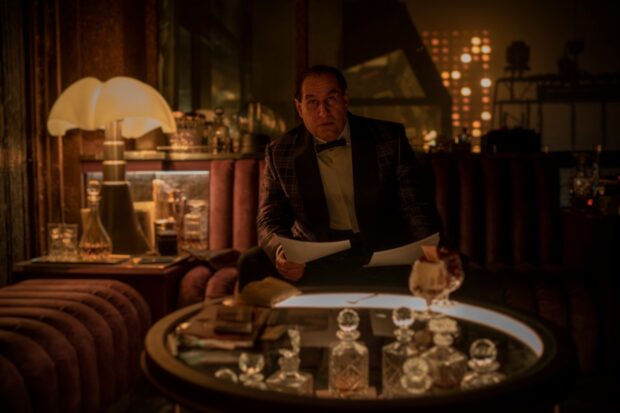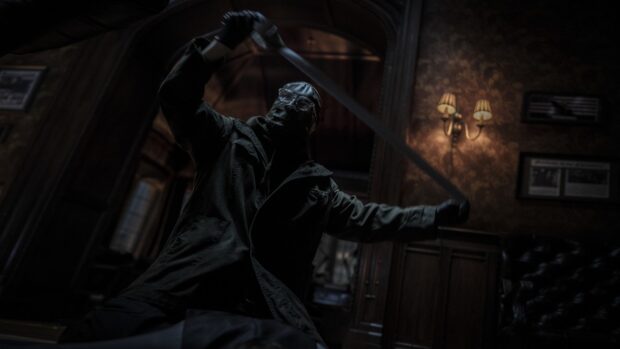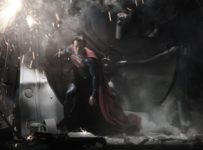A vigilante steps out of the darkness with all the understated presence of a gunslinger on the old west frontier. You have to hand it to director Matt Reeves: after ten live-action screen appearances since Tim Burton’s 1989 film, and countless TV and animated outings, he’s found a new way of showcasing the caped crusader. Yet as the spotlight on the Dark Knight gets brighter, the edges of Gotham get even darker.
In fact, from its voyeuristic opening to the sudden appearance of a killer in the shadows, THE BATMAN has all the earmarks of a horror film. Pulling on elements from various comic book sources, including bits from the excellent Zero Year run of Scott Snyder and Greg Capullo, Reeves and Craig’s script cleverly sets us down two years into Batman’s adventures in Gotham. This means we don’t have to see poor Martha’s pearls hitting the pavement of Crime Alley once again, as well emphasising the moniker of The World’s Greatest Detective for the first time.
As a serial killer known as The Riddler terrorises Gotham’s elite, GCPD detective James Gordon (Jeffrey Wright) involves vigilante Batman (Robert Pattinson) in the investigation despite the objections of his fellow cops. Haunted by his own traumatic past, Bruce Wayne/Batman is torn as he uncovers family secrets and connections with the enigmatic cat burglar Selina Kyle (Zoë Kravitz), mob enforcer Oswald “Oz” Cobblepott (Colin Farrell) and crime lord Carmine Falcone (John Turturro).
With THE BATMAN, Reeves delivers one of the most stylish and gorgeously shot Batman films to date, casting Gotham in a timeless mix of neon, grimy streets and drug-filled nightclubs. Making full use of shadows and light, and providing plenty of places for the titular vigilante to emerge from, Reeves and production designer James Chinlund (War for the Planet of the Apes) give cinematographer Greig Fraser (Dune) plenty of visually literate images to linger on. At times, we’re smack dab in Times Square somewhere between the 1940s and 1970s, with overlapping neon signs that might have been captured by French photographer Andreas Feininger. At others, we’re in the corner diner of an Edward Hopper painting. The recurring motif of red bathes many scenes in a sinister red glow, and the use of Batman’s first-person point of view technology adds a peep show vibe to that ickiness.
Without the burden of an origin story, this Batman wastes little time before cracking skulls and taking names. “Two years of nights have turned me into a nocturnal animal,” narrates Pattinson, as the obligatory Nirvana track kicks in to signify dissatisfaction. As we watch him break the bones of thugs, or indiscriminately fight his way through a nightclub, few objections will come from an audience of battle-hardened players of the Arkham video game series. These action sequences reach some magnificent heights, including the thundering introduction of the new Batmobile, backed by the dirge of a Michael Giacchino score that rattles the speakers and our back teeth in equal measure. The ensuing chase is doggedly determined to not keep any objects in the centre of frame for more than a half-beat, discombobulating us in a sea of darkly-lit angular shots. Yet the set-piece finale is quite a masterfully executed piece, albeit vaguely reminiscent of elements seen in The Dark Knight Rises.
The casting is genuinely inspired too. Pattinson steps confidently into a role already belonging to so many others, owning the new suit that’s equal parts Capullo and artist Lee Bermejo. Reeves keeps the presence of emo alter ego Bruce Wayne to a minimum, as that seems to be a less comfortable space for Pattinson. Similarly, Kravitz looks as though she may have stepped straight out of one of Darwyn Cooke’s illustrations, offering us a more complex version of the character than we’ve seen before. While we might have cringed our way through some of the Anonymous-influenced rants of Paul Dano’s Riddler, it’s the unrecognisable Farrell as Penguin that will have most talking, clearly having a ball under all those prosthetics.
Yet the film is often relentlessly bleak, and never quite gets out of those dark depths in a lengthy running time that makes you feel every inch. At times it treads a little too close to glorifying the violent models laid down by Watchmen’s Rorschach (complete with diarised narration) or the more recent Joker portrayals, but that’s par for the course with the film’s western motifs — and anything post-Frank Miller when it comes to the Bat. The torture techniques of the Riddler are especially disturbing, leaning into the sadism of certain horror flicks. If there are comparisons to be made with serial killer thrillers like Zodiac (and straight-up visual references to Se7en), one sometimes wonders who we are supposed to be rooting for. The Riddler himself points this out in a climax that effectively uses alt-right messageboards as a plot device, recognising the thin line between those who claim their ‘truths’ and the ones who act upon them in violent ways.
Which is the essential dilemma of the modern superhero film, or any depiction of the character since at least the 1980s. The Modern Age darkness of Batman began as a response to the militaristic nationalism of US discourse at the time, also reflected in The Dark Knight Returns, Alan Moore’s Watchmen and Marvel’s Punisher to name a few. In an attempt to update the themes, film also takes an each-way bet on police corruption, condemning the system that allowed it while also serving some soft ‘rotten apples’ messaging. Writing about another hero, one that also went through a dark 80s transformation, Lampert (2007) concludes that the perpetuation of this model offers few options. “Either crypto-fascist super-cop, or crypto-fascist criminal; either way, the political choice is clear.” Reeves’ Batman starts with one foot firmly in the latter camp, and if this is an origin story of sorts, then it is about his journey towards the former.
While ending on a moment of hope, and laying down a path for the future, some may still feel that Reeves has already done his job, without any need to return to this particular world. As DC and Warner showcase a mixture of DCEU and retro offerings on the horizon, it’s unclear where this – allegedly the first of a trilogy of films – will fit in their grand plans. Yet as the final scenes hint at where the series might go next, it’s already starting to feel like we’re in familiar territory. For now, it’s a curious standalone Elseworlds piece that works best as an experiment in styles and a mixture of screen influences, with some great casting and a sophisticated sense of comic and cinema aesthetics.
2022 | USA | DIRECTOR: Matt Reeves | WRITERS: Matt Reeves, Peter Craig | CAST: Robert Pattinson, Zoë Kravitz, Paul Dano, Jeffrey Wright, John Turturro, Peter Sarsgaard, Barry Keoghan, Andy Serkis, Colin Farrell | DISTRIBUTOR: Warner Bros. | RUNNING TIME: 176 minutes | RELEASE DATE: 2 March 2022 (AUS), 4 March 2022 (AUS)

